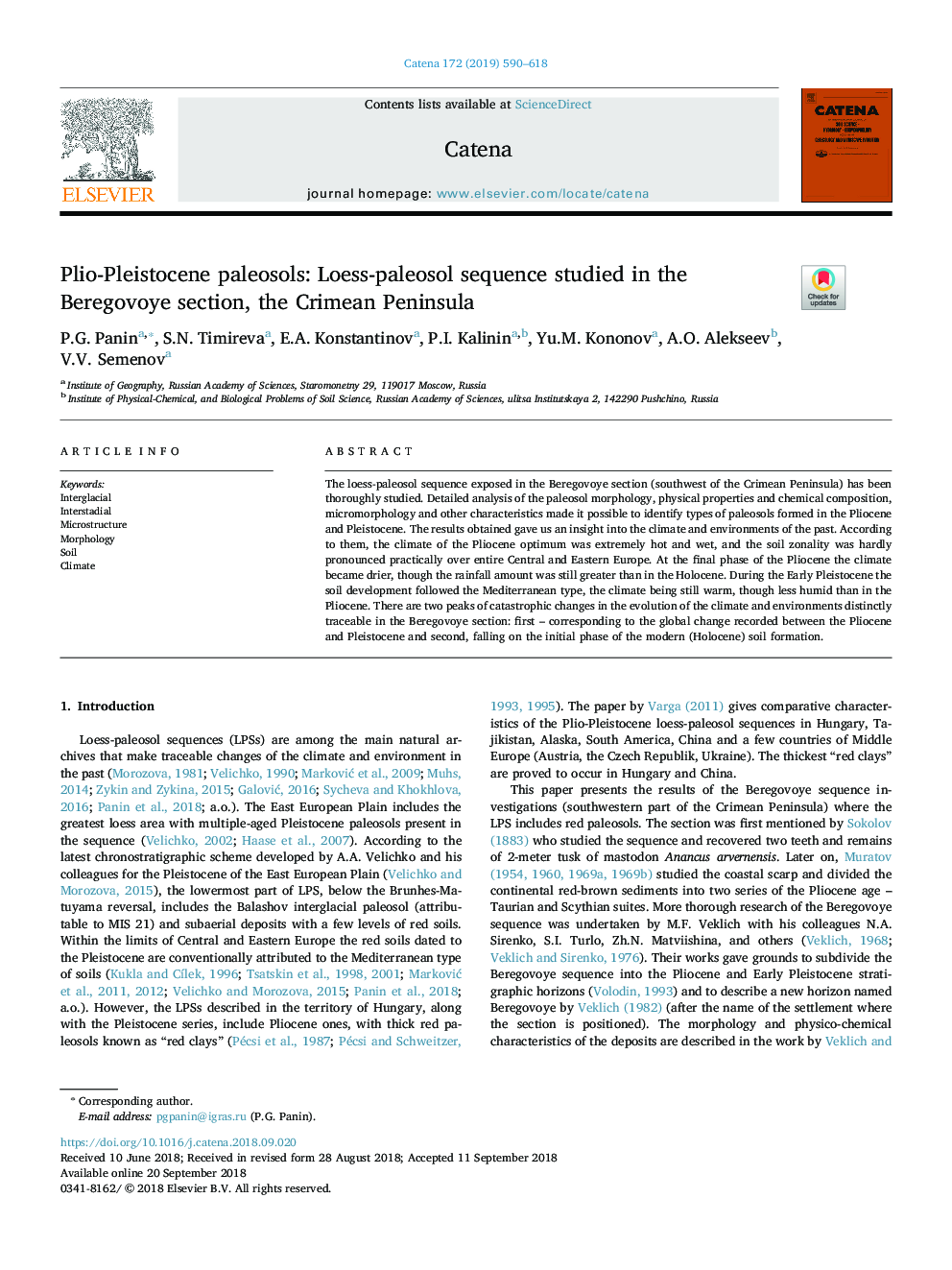| Article ID | Journal | Published Year | Pages | File Type |
|---|---|---|---|---|
| 10118212 | CATENA | 2019 | 29 Pages |
Abstract
The loess-paleosol sequence exposed in the Beregovoye section (southwest of the Crimean Peninsula) has been thoroughly studied. Detailed analysis of the paleosol morphology, physical properties and chemical composition, micromorphology and other characteristics made it possible to identify types of paleosols formed in the Pliocene and Pleistocene. The results obtained gave us an insight into the climate and environments of the past. According to them, the climate of the Pliocene optimum was extremely hot and wet, and the soil zonality was hardly pronounced practically over entire Central and Eastern Europe. At the final phase of the Pliocene the climate became drier, though the rainfall amount was still greater than in the Holocene. During the Early Pleistocene the soil development followed the Mediterranean type, the climate being still warm, though less humid than in the Pliocene. There are two peaks of catastrophic changes in the evolution of the climate and environments distinctly traceable in the Beregovoye section: first - corresponding to the global change recorded between the Pliocene and Pleistocene and second, falling on the initial phase of the modern (Holocene) soil formation.
Related Topics
Physical Sciences and Engineering
Earth and Planetary Sciences
Earth-Surface Processes
Authors
P.G. Panin, S.N. Timireva, E.A. Konstantinov, P.I. Kalinin, Yu.M. Kononov, A.O. Alekseev, V.V. Semenov,
